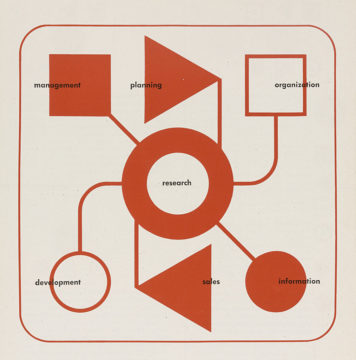 Isabel Estevez in Phenomenal World:
Isabel Estevez in Phenomenal World:
The latest US experiment with industrial policy—comprised primarily by the Inflation Reduction Act (IRA), the CHIPS and Science Act, and the Infrastructure Investment and Jobs Act—has sparked outright opposition and pleas for restraint, but also calls for far more ambitious action.
The divergent responses are representative of the lack of consensus about the nature of the challenges that US industrial policy could or should address. In the broadest sense, industrial policy refers to the deployment of policy tools in order to influence how we create value—what goods (and services) we produce and how we produce them. In economist Ha-Joon Chang’s words, it is a set of “policies aimed at particular industries (and firms as their components) to achieve outcomes that are perceived by the state to be efficient for the economy as a whole.” Mario Cimoli, Giovanni Dosi, and Joseph Stiglitz argue that industrial policies “come together with processes of ‘institutional engineering’ shaping the very nature of the economic actors, the market mechanisms and rules under which they operate, and the boundaries between what is governed by market interactions, and what is not.” These different understandings of industrial policy all recognize the government as a key actor in shaping the world of production in line with a public purpose.
More here.

 What exactly separates the short story from the novel? As the contemporary Scottish writer William Boyd has observed, the issue is more complicated than it might at first appear. Novelists and short story writers, Boyd points out, rely on the same “literary tools,” including character, plot, setting, title, and dialogue, and their outputs—sentences and paragraphs—look the same on the page. The tempting answer is to fall back on the obvious difference: short stories are just shorter than novels.
What exactly separates the short story from the novel? As the contemporary Scottish writer William Boyd has observed, the issue is more complicated than it might at first appear. Novelists and short story writers, Boyd points out, rely on the same “literary tools,” including character, plot, setting, title, and dialogue, and their outputs—sentences and paragraphs—look the same on the page. The tempting answer is to fall back on the obvious difference: short stories are just shorter than novels. T
T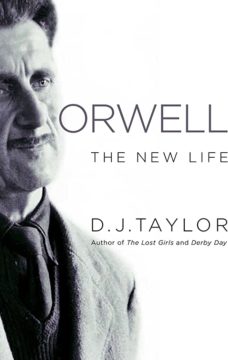 The key to his reading of Orwell is what happened to him in Spain. Though married to Eileen only six months before, he was determined to fight for the Republican cause (“Good chaps, the Spaniards, can’t let them down”) and on his return became far more politically engaged: “at last [I] really believe in Socialism, which I never did before”. But he’d seen bullying and infighting too. For the rest of his life and in his two great novels, this was the war he fought, on behalf of a wholesome, English, sweetly C of E brand of socialism, as opposed to Stalinist totalitarianism.
The key to his reading of Orwell is what happened to him in Spain. Though married to Eileen only six months before, he was determined to fight for the Republican cause (“Good chaps, the Spaniards, can’t let them down”) and on his return became far more politically engaged: “at last [I] really believe in Socialism, which I never did before”. But he’d seen bullying and infighting too. For the rest of his life and in his two great novels, this was the war he fought, on behalf of a wholesome, English, sweetly C of E brand of socialism, as opposed to Stalinist totalitarianism.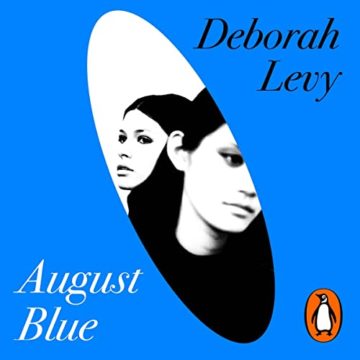 “August Blue” is Levy’s eighth novel, and since her 20s, she has been refining her ability to evoke feeling through writing rather than to narrate it. Her work is deeply influenced by art forms that express the embodied experience, like cinema and dance. “The body in the world,” she said. “How difficult. It is my subject.”
“August Blue” is Levy’s eighth novel, and since her 20s, she has been refining her ability to evoke feeling through writing rather than to narrate it. Her work is deeply influenced by art forms that express the embodied experience, like cinema and dance. “The body in the world,” she said. “How difficult. It is my subject.” In January 2023, when ChatGPT was
In January 2023, when ChatGPT was 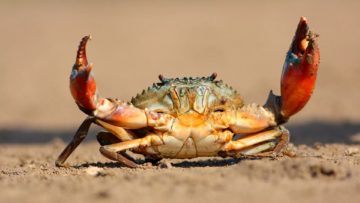 A flat, rounded shell. A tail that’s folded under the body. This is what a crab looks like, and apparently what peak performance might look like — at least according to
A flat, rounded shell. A tail that’s folded under the body. This is what a crab looks like, and apparently what peak performance might look like — at least according to 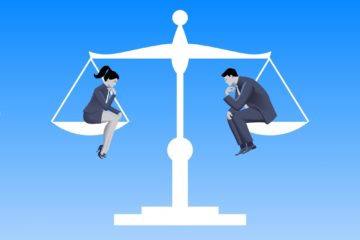 We synthesized the vast, contradictory scholarly literature on gender bias in academic science from 2000 to 2020. In the most prestigious journals and media outlets, which influence many people’s opinions about sexism, bias is frequently portrayed as an omnipresent factor limiting women’s progress in the tenure-track academy. Claims and counterclaims regarding the presence or absence of sexism span a range of evaluation contexts. Our approach relied on a combination of meta-analysis and analytic dissection. We evaluated the empirical evidence for gender bias in six key contexts in the tenure-track academy: (a) tenure-track hiring, (b) grant funding, (c) teaching ratings, (d) journal acceptances, (e) salaries, and (f) recommendation letters. We also explored the gender gap in a seventh area, journal productivity, because it can moderate bias in other contexts. We focused on these specific domains, in which sexism has most often been alleged to be pervasive, because they represent important types of evaluation, and the extensive research corpus within these domains provides sufficient quantitative data for comprehensive analysis. Contrary to the omnipresent claims of sexism in these domains appearing in top journals and the media, our findings show that tenure-track women are at parity with tenure-track men in three domains (grant funding, journal acceptances, and recommendation letters) and are advantaged over men in a fourth domain (hiring). For teaching ratings and salaries, we found evidence of bias against women; although gender gaps in salary were much smaller than often claimed, they were nevertheless concerning.
We synthesized the vast, contradictory scholarly literature on gender bias in academic science from 2000 to 2020. In the most prestigious journals and media outlets, which influence many people’s opinions about sexism, bias is frequently portrayed as an omnipresent factor limiting women’s progress in the tenure-track academy. Claims and counterclaims regarding the presence or absence of sexism span a range of evaluation contexts. Our approach relied on a combination of meta-analysis and analytic dissection. We evaluated the empirical evidence for gender bias in six key contexts in the tenure-track academy: (a) tenure-track hiring, (b) grant funding, (c) teaching ratings, (d) journal acceptances, (e) salaries, and (f) recommendation letters. We also explored the gender gap in a seventh area, journal productivity, because it can moderate bias in other contexts. We focused on these specific domains, in which sexism has most often been alleged to be pervasive, because they represent important types of evaluation, and the extensive research corpus within these domains provides sufficient quantitative data for comprehensive analysis. Contrary to the omnipresent claims of sexism in these domains appearing in top journals and the media, our findings show that tenure-track women are at parity with tenure-track men in three domains (grant funding, journal acceptances, and recommendation letters) and are advantaged over men in a fourth domain (hiring). For teaching ratings and salaries, we found evidence of bias against women; although gender gaps in salary were much smaller than often claimed, they were nevertheless concerning.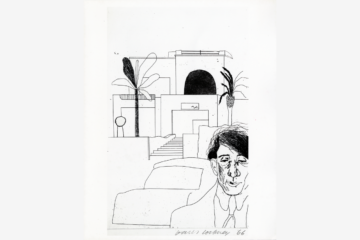 Cavafy did not cut an imposing figure. His bearing—along with his poetry, his philosophy, and his historiographical perspective—might best be
Cavafy did not cut an imposing figure. His bearing—along with his poetry, his philosophy, and his historiographical perspective—might best be  In 1988—that is, before any hallmark style threatened to dominate her practice—Trockel identified the “constants” that fueled her protean vision as “woman, inconsistency, reaction to fashionable trends.” Woman, broadly speaking, is the focus of three of the remaining four galleries on level one. Devoted mostly to the artist’s early years, the trio of dark, densely installed rooms include numerous canonical works featuring such key motifs as blown eggs, hot plates, and corporate logos. Consider Sabine, 1994, a digital print that depicts a naked brunette in sunglasses poised precariously on a small stove in a humble kitchen. Rhyming her subject’s pose with that of the Crouching Aphrodite, Trockel injects a mordant note into the misogynistic scenario. When installed at the MMK at the apex of a tall triangular gallery, Sabine literally acts out its governing thematics: constraint and confinement. The video Mr. Sun, 2000, projected on a hanging screen nearby, is more abject: As the camera crawls lasciviously over a gleaming stove, Brigitte Bardot’s voice croons, “Stay awhile, Mr. Sun.” Dominating the adjacent wall is a large knit painting, Made in Western Germany, 1987, the eponymous anglophone trademark repeated serially across its surface. Coined in 1973 to guarantee the high quality of products manufactured in the FDR (as opposed to the GDR) for an international market, the logo symbolizes the Wirtschaftswunder, the postwar economic miracle during which Trockel came of age in the Rhineland.
In 1988—that is, before any hallmark style threatened to dominate her practice—Trockel identified the “constants” that fueled her protean vision as “woman, inconsistency, reaction to fashionable trends.” Woman, broadly speaking, is the focus of three of the remaining four galleries on level one. Devoted mostly to the artist’s early years, the trio of dark, densely installed rooms include numerous canonical works featuring such key motifs as blown eggs, hot plates, and corporate logos. Consider Sabine, 1994, a digital print that depicts a naked brunette in sunglasses poised precariously on a small stove in a humble kitchen. Rhyming her subject’s pose with that of the Crouching Aphrodite, Trockel injects a mordant note into the misogynistic scenario. When installed at the MMK at the apex of a tall triangular gallery, Sabine literally acts out its governing thematics: constraint and confinement. The video Mr. Sun, 2000, projected on a hanging screen nearby, is more abject: As the camera crawls lasciviously over a gleaming stove, Brigitte Bardot’s voice croons, “Stay awhile, Mr. Sun.” Dominating the adjacent wall is a large knit painting, Made in Western Germany, 1987, the eponymous anglophone trademark repeated serially across its surface. Coined in 1973 to guarantee the high quality of products manufactured in the FDR (as opposed to the GDR) for an international market, the logo symbolizes the Wirtschaftswunder, the postwar economic miracle during which Trockel came of age in the Rhineland. Researchers have failed to find a uniform marker for aging. The aging process seems to be different for different individuals; it is varied, chaotic, and idiosyncratic. There is probably no single cause, but many causes have been proposed: collagen breakdown, UV light, oxidation, inflammation, insulin resistance, glycation, free radicals, accumulation of DNA copying errors, telomere shortening, accumulation of waste products, heterochromatin loss, and many others. I suspect that many of these factors are contributory and that they interact with each other.
Researchers have failed to find a uniform marker for aging. The aging process seems to be different for different individuals; it is varied, chaotic, and idiosyncratic. There is probably no single cause, but many causes have been proposed: collagen breakdown, UV light, oxidation, inflammation, insulin resistance, glycation, free radicals, accumulation of DNA copying errors, telomere shortening, accumulation of waste products, heterochromatin loss, and many others. I suspect that many of these factors are contributory and that they interact with each other. The largest ever study of primates has unveiled surprises about humanity and our closest relatives, providing insight into which genes do, and don’t, separate us from other primates. The huge international study has also yielded new data for a wide range of disciplines, including human health, conservation biology and behavioural science.
The largest ever study of primates has unveiled surprises about humanity and our closest relatives, providing insight into which genes do, and don’t, separate us from other primates. The huge international study has also yielded new data for a wide range of disciplines, including human health, conservation biology and behavioural science.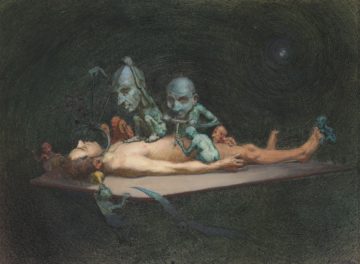 Those who sipped or sniffed ether and chloroform in the 19th century experienced a range of effects from these repurposed anaesthetics, including preternatural mental clarity, psychological hauntings, and slippages of space and time. Mike Jay explores how the powerful solvents shaped the writings of Guy de Maupassant and Jean Lorrain — psychonauts who opened the door to an invisible dimension of mind and suffered Promethean consequences.
Those who sipped or sniffed ether and chloroform in the 19th century experienced a range of effects from these repurposed anaesthetics, including preternatural mental clarity, psychological hauntings, and slippages of space and time. Mike Jay explores how the powerful solvents shaped the writings of Guy de Maupassant and Jean Lorrain — psychonauts who opened the door to an invisible dimension of mind and suffered Promethean consequences. Is this the real life? Is this just fantasy?
Is this the real life? Is this just fantasy? Dreams of a guaranteed income are longstanding, but they leapt back into the public imagination in the wake of the dismal recovery from the 2008 financial crash, endorsed by a diverse array of figures on both the left and right. In 2020 presidential candidate Andrew Yang briefly managed to catapult himself into the media spotlight by pitching an eye-catching “
Dreams of a guaranteed income are longstanding, but they leapt back into the public imagination in the wake of the dismal recovery from the 2008 financial crash, endorsed by a diverse array of figures on both the left and right. In 2020 presidential candidate Andrew Yang briefly managed to catapult himself into the media spotlight by pitching an eye-catching “